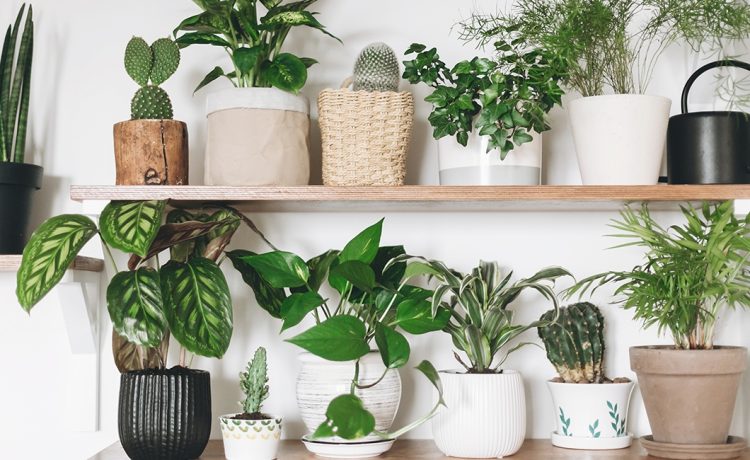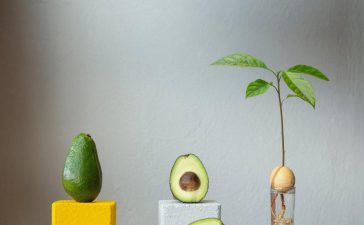Cultivating plants can bring great joy and aesthetic appeal to your home. However, it can also be disheartening when plants fail to thrive or perish unexpectedly. Many of us unknowingly make common mistakes that hinder the growth of our houseplants. To help you avoid these pitfalls, here are some valuable insights from the experts.
Not Researching Your Plant Before Purchasing
When it comes to selecting plants for your home, it’s important to consider their specific requirements before making a purchase. While you may admire a fiddle leaf fig or any other plant, it might not be suitable for your environment. As Bliss Bendall, a certified horticulturist from NYBG, points out, certain plants, like the fiddle leaf fig, require bright, filtered warm sunlight for six to eight hours a day. Without adequate exposure to these conditions, the plant is likely to wither and perish.
Inconsistent Plant Care
If you have a busy lifestyle or frequently travel, maintaining healthy plants may not be feasible. As Bliss Bendall highlights, being a plant parent requires precise knowledge and consistent care. There is a science behind plant care, and meeting their specific requirements is crucial for their survival. Winging it or relying on guesswork won’t suffice for the majority of common houseplants.
Watering is particularly important, as emphasized by Kaylyn Hewitt, lead floral designer of The Bouqs Co. Each plant has its own unique watering needs, and there is no universal schedule that applies to all. It is essential to conduct research and understand the specific watering requirements of each plant you own. Adopting a one-size-fits-all approach is unlikely to yield favorable results.
Using Tap Water
According to Bliss Bendall, tap water may not be the best option for watering plants. While it is cheap and convenient, it can potentially harm your houseplants due to salt buildup. To avoid this issue, Bendall recommends using distilled, sodium-free water. This simple adjustment can make a significant difference in the health of your plants. You can easily obtain distilled water by purchasing gallon jugs from the store or by boiling your own water and allowing it to cool for 24 hours before use.
Not Fertilizing Your Houseplants
According to Kaylyn Hewitt, fertilizing your plants is an important step that is often overlooked. It’s crucial to set a reminder and fertilize your plants every few months to ensure their health and vitality. If you’re unsure about the specific fertilization schedule for your plant, look up the recommended guidelines. Additionally, remember that many houseplants should not be fertilized during the winter months, as they may have different nutritional needs during this time.
Not Considering the Direction of the Sunlight
Understanding the direction of sunlight in your home is essential when placing your plants. Bliss Bendall emphasizes the importance of knowing where the sun is coming from at different times of the day. The strength and intensity of sunlight can vary depending on the direction, such as southeast or northwest exposure. This knowledge will help you choose the right room and location for your plants to thrive.
Not Being Patient
It’s important to have realistic expectations when it comes to the growth rate of your plants. Bliss Bendall suggests that you might be giving up on a plant too early if you think it’s not growing fast enough. Some plants may take longer to reach their desired size or fill up a space as quickly as you expected. On the other hand, certain plants can grow rapidly within a year or so, exceeding your initial expectations. Patience and understanding the growth habits of your specific plant are key to avoiding frustration and giving up prematurely.
Ignoring Humidity Levels
If you reside in a dry or arid climate with low humidity levels, it is essential to consider the humidity requirements of plants before purchasing them. The humidity levels in your home can have a significant impact on the overall health and well-being of your plants, particularly if they originate from tropical regions. It is important to create an environment that mimics their natural habitat to ensure their long-term vitality.
Not Repotting
Neglecting to repot a plant as it matures or grows larger can have detrimental effects. Over time, soil can deteriorate and erode due to various factors, including watering. Additionally, if a plant is kept in a pot that is too small, it can become root-bound, where the roots outgrow the available space. Therefore, it is important to periodically repot plants to provide them with adequate room for root growth and to refresh the soil, ensuring optimal health and vitality.
Forgetting to Dust the Leaves
Regularly dusting your plants may seem like a tedious task, but it plays a crucial role in promoting optimal growth, as explained by Bendall. Dust accumulation on plant leaves can impede sunlight penetration, thereby slowing down photosynthesis. Photosynthesis is the vital process through which green plants utilize sunlight to synthesize food from carbon dioxide and water. By keeping the leaves clean and free from dust, you ensure that your plants can efficiently carry out photosynthesis and thrive.
Placing Plants on Top of an Air Conditioner or Heater
If you have been placing your plants on or near an air conditioner or heater, it’s important to relocate them and consider adding new decorations to the area. Plants are living organisms, and their health is greatly influenced by temperature, especially if they come from hot or cold climates. Exposing them to extreme temperatures can be detrimental and potentially cause damage or death to the plants. It’s essential to create a suitable environment for your plants where they can thrive and avoid subjecting them to freezing or scorching conditions.






